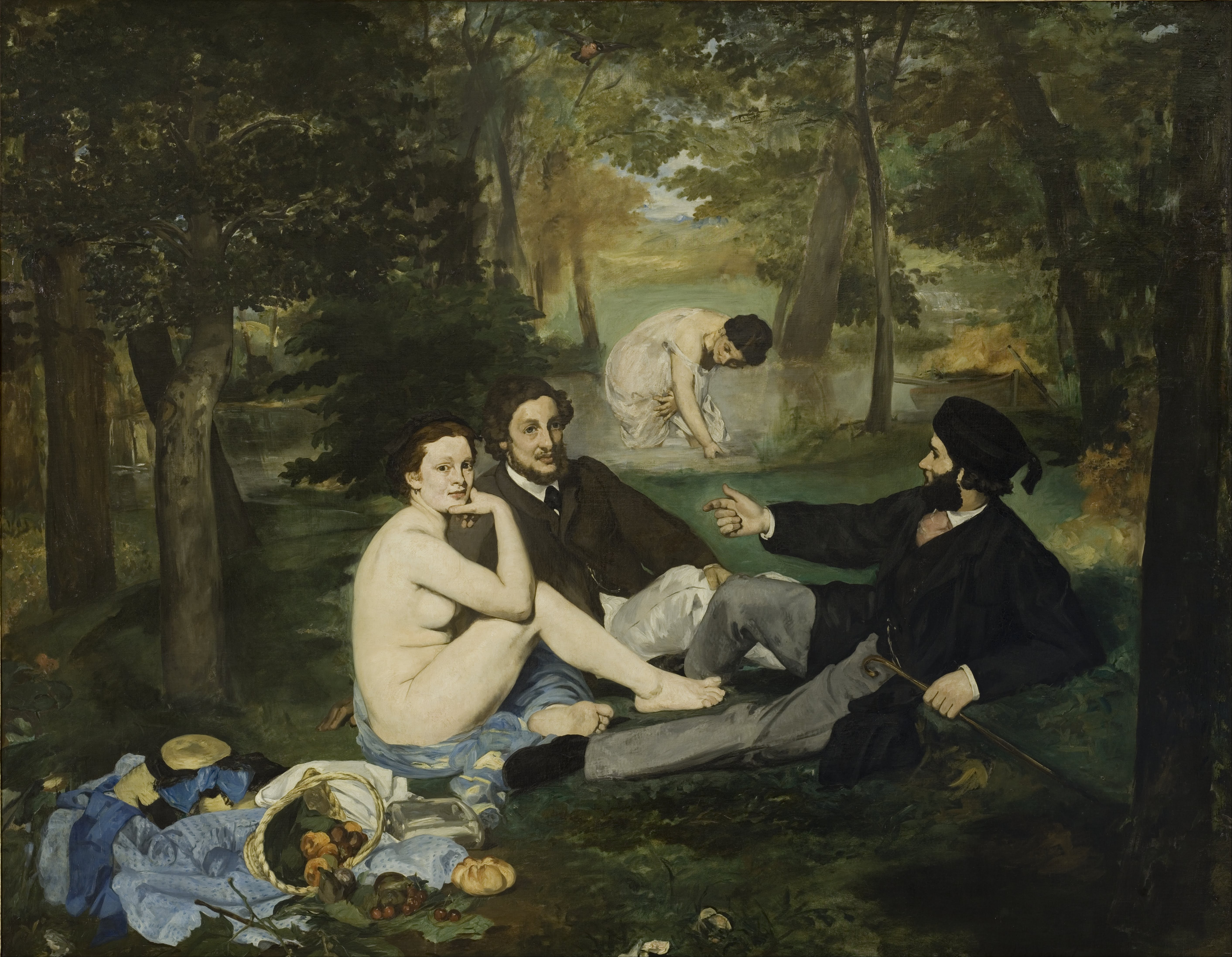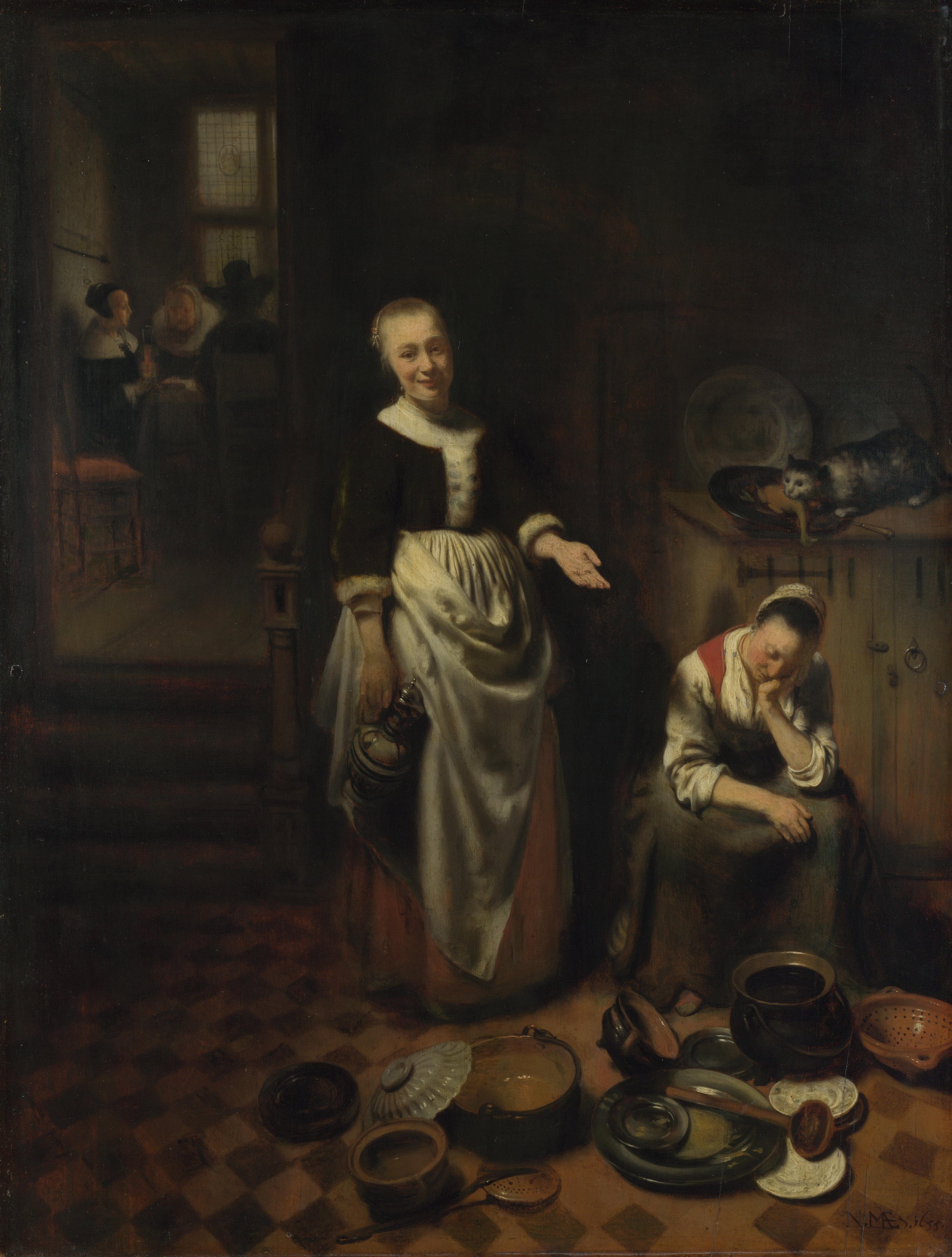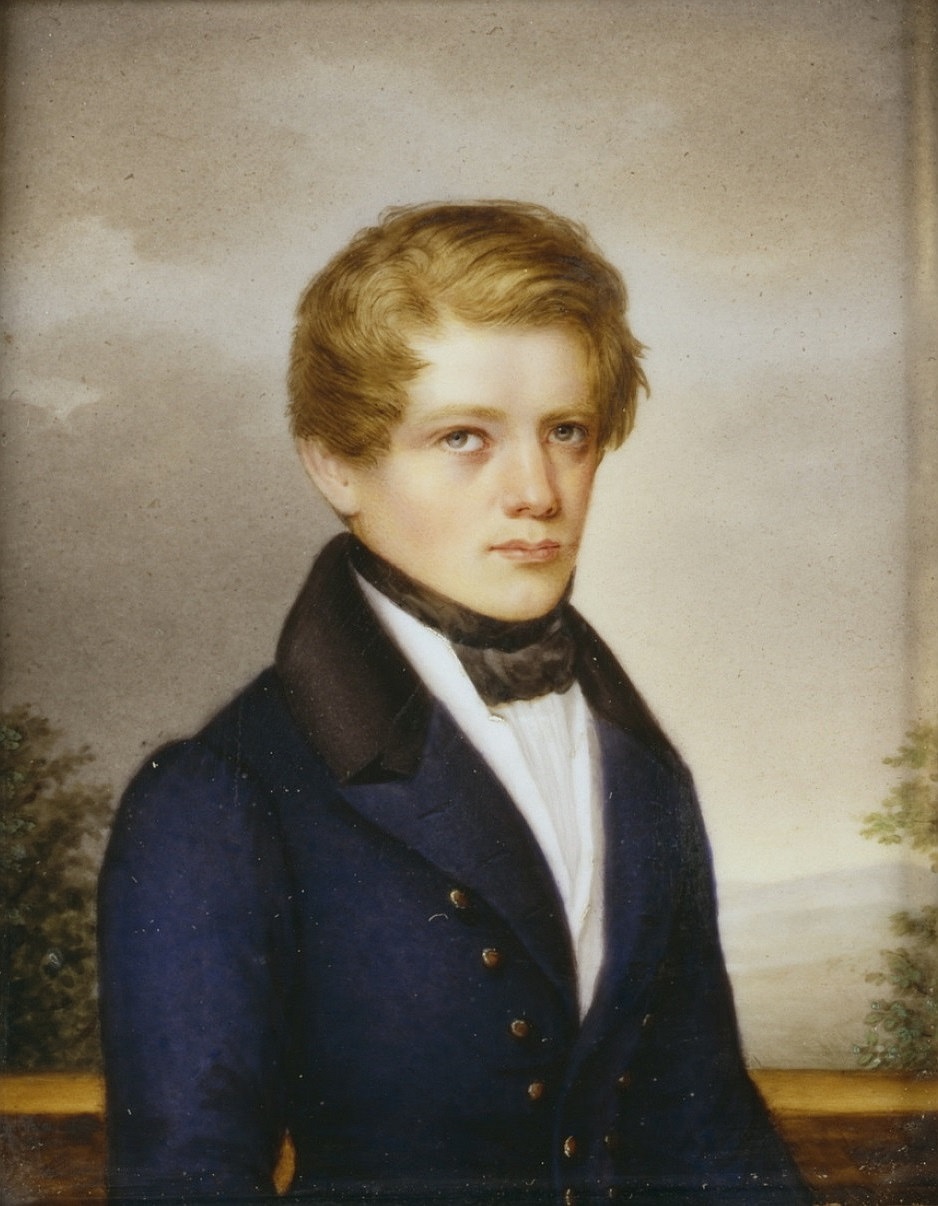|
Adolph Von Menzel
Adolph Friedrich Erdmann von Menzel (8 December 18159 February 1905) was a German Realist artist noted for drawings, etchings, and paintings. Along with Caspar David Friedrich, he is considered one of the two most prominent German painters of the 19th century,Fried, 11 and was the most successful artist of his era in Germany.Eisler, 559–565 First known as Adolph Menzel, he was knighted in 1898 and changed his name to Adolph von Menzel. His popularity in his native country, owing especially to his history paintings, was such that few of his major paintings left Germany, as many were quickly acquired by museums in Berlin.Eisler, 559 Menzel's graphic work (and especially his drawings) were more widely disseminated; these, along with informal paintings not initially intended for display, have largely accounted for his posthumous reputation.Eisler, 559–565 Although he traveled in order to find subjects for his art, to visit exhibitions, and to meet with other artists, Menzel spen ... [...More Info...] [...Related Items...] OR: [Wikipedia] [Google] [Baidu] |
Wrocław
Wrocław (; german: Breslau, or . ; Silesian German: ''Brassel'') is a city in southwestern Poland and the largest city in the historical region of Silesia. It lies on the banks of the River Oder in the Silesian Lowlands of Central Europe, roughly from the Baltic Sea to the north and from the Sudeten Mountains to the south. , the official population of Wrocław is 672,929, with a total of 1.25 million residing in the metropolitan area, making it the third largest city in Poland. Wrocław is the historical capital of Silesia and Lower Silesia. Today, it is the capital of the Lower Silesian Voivodeship. The history of the city dates back over a thousand years; at various times, it has been part of the Kingdom of Poland, the Kingdom of Bohemia, the Kingdom of Hungary, the Habsburg monarchy of Austria, the Kingdom of Prussia and Germany. Wrocław became part of Poland again in 1945 as part of the Recovered Territories, the result of extensive border changes and expulsions ... [...More Info...] [...Related Items...] OR: [Wikipedia] [Google] [Baidu] |
Frederick The Great
Frederick II (german: Friedrich II.; 24 January 171217 August 1786) was King in Prussia from 1740 until 1772, and King of Prussia from 1772 until his death in 1786. His most significant accomplishments include his military successes in the Silesian wars, his re-organisation of the Prussian Army, the First Partition of Poland, and his patronage of the arts and the Enlightenment. Frederick was the last Hohenzollern monarch titled King in Prussia, declaring himself King of Prussia after annexing Polish Prussia from the Polish–Lithuanian Commonwealth in 1772. Prussia greatly increased its territories and became a major military power in Europe under his rule. He became known as Frederick the Great (german: links=no, Friedrich der Große) and was nicknamed "Old Fritz" (german: links=no, "Der Alte Fritz"). In his youth, Frederick was more interested in music and philosophy than in the art of war, which led to clashes with his authoritarian father, Frederick William I of Prussia. ... [...More Info...] [...Related Items...] OR: [Wikipedia] [Google] [Baidu] |
Julius Meier-Graefe
, ro, Reșița), Resicabánya Dist., Krassó-Szörény Co, Bánság, Royal Hungary, Imperial and Royal Austria(now Romania) , death_date = , death_place = Vevey, VD, Switzerland , nationality = German, Hungarian German , occupation = Art critic, novelist Julius Meier-Graefe (10 June 1867 – 5 June 1935) was a German art critic and novelist. His writings on Impressionism, Post-Impressionism as well as on art of earlier and more recent generations, with his most important contributions translated into French, Russian and English, are considered to have been instrumental for the understanding and the lasting success of these artistic movements. Biography Meier-Graefe was born in Reschitz, Banat, Hungary, then part of the Austro-Hungarian Empire, and now located in modern Romania. He was the grandson of ( he, מוריץ הרמן אדוארד מאייר), and son of , a government civil engineer, and Marie Theresie (Marie-Thérèse) ... [...More Info...] [...Related Items...] OR: [Wikipedia] [Google] [Baidu] |
English Art
English art is the body of visual arts made in England. England has Europe's earliest and northernmost ice-age cave art. Prehistoric art in England largely corresponds with art made elsewhere in contemporary Britain, but early medieval Anglo-Saxon art saw the development of a distinctly English style, and English art continued thereafter to have a distinct character. English art made after the formation in 1707 of the Kingdom of Great Britain may be regarded in most respects simultaneously as art of the United Kingdom. Medieval English painting, mainly religious, had a strong national tradition and was influential in Europe. The English Reformation, which was antipathetic to art, not only brought this tradition to an abrupt stop but resulted in the destruction of almost all wall-paintings. Only illuminated manuscripts now survive in good numbers. There is in the art of the English Renaissance a strong interest in portraiture, and the portrait miniature was more popular in Englan ... [...More Info...] [...Related Items...] OR: [Wikipedia] [Google] [Baidu] |
French Art Of The 19th Century
19th-century French art was made in France or by French citizens during the following political regimes: Napoleon Bonaparte's Consulate (1799–1804) and Empire (1804–1814), the Restoration under Louis XVIII and Charles X (1814–1830), the July Monarchy under Louis Philippe d'Orléans (1830–1848), the Second Republic (1848–1852), the Second Empire under Napoleon III (1852–1871), and the first decades of the Third Republic (1871–1940). Many of the developments in French arts in this period parallel changes in literature. For more on this, see French literature of the 19th century. For more on French history, see History of France. Romanticism The French Revolution and the Napoleonic wars brought great changes to the arts in France. The program of exaltation and mythification of the Emperor Napoleon I of France was closely coordinated in the paintings of Gros and Guérin. Meanwhile, Orientalism, Egyptian motifs, the tragic anti-hero, the wild landscape, the histori ... [...More Info...] [...Related Items...] OR: [Wikipedia] [Google] [Baidu] |
Genre Works
Genre art is the pictorial representation in any of various media of scenes or events from everyday life, such as markets, domestic settings, interiors, parties, inn scenes, work, and street scenes. Such representations (also called genre works, genre scenes, or genre views) may be realistic, imagined, or romanticized by the artist. Some variations of the term ''genre art'' specify the medium or type of visual work, as in ''genre painting'', ''genre prints'', ''genre photographs'', and so on. The following concentrates on painting, but genre motifs were also extremely popular in many forms of the decorative arts, especially from the Rococo of the early 18th century onwards. Single figures or small groups decorated a huge variety of objects such as porcelain, furniture, wallpaper, and textiles. Genre painting ''Genre painting'', also called ''genre scene'' or ''petit genre'', depicts aspects of everyday life by portraying ordinary people engaged in common activities. One comm ... [...More Info...] [...Related Items...] OR: [Wikipedia] [Google] [Baidu] |
Impressionism
Impressionism was a 19th-century art movement characterized by relatively small, thin, yet visible brush strokes, open Composition (visual arts), composition, emphasis on accurate depiction of light in its changing qualities (often accentuating the effects of the passage of time), ordinary subject matter, unusual visual angles, and inclusion of movement as a crucial element of human perception and experience. Impressionism originated with a group of Paris-based artists whose independent exhibitions brought them to prominence during the 1870s and 1880s. The Impressionists faced harsh opposition from the conventional art community in France. The name of the style derives from the title of a Claude Monet work, ''Impression, soleil levant'' (''Impression, Sunrise''), which provoked the critic Louis Leroy to coin the term in a Satire, satirical review published in the Parisian newspaper ''Le Charivari''. The development of Impressionism in the visual arts was soon followed by analogo ... [...More Info...] [...Related Items...] OR: [Wikipedia] [Google] [Baidu] |
Adolf Hitler
Adolf Hitler (; 20 April 188930 April 1945) was an Austrian-born German politician who was dictator of Nazi Germany, Germany from 1933 until Death of Adolf Hitler, his death in 1945. Adolf Hitler's rise to power, He rose to power as the leader of the Nazi Party, becoming the Chancellor of Germany, chancellor in 1933 and then taking the title of in 1934. During his dictatorship, he initiated European theatre of World War II, World War II in Europe by invasion of Poland, invading Poland on 1 September 1939. He was closely involved in military operations throughout the war and was central to the perpetration of the Holocaust: the genocide of Holocaust victims, about six million Jews and millions of other victims. Hitler was born in Braunau am Inn in Austria-Hungary and was raised near Linz. He lived in Vienna later in the first decade of the 1900s and moved to Germany in 1913. He was decorated during his Military career of Adolf Hitler, service in the German Army in Worl ... [...More Info...] [...Related Items...] OR: [Wikipedia] [Google] [Baidu] |
Otto Von Bismarck
Otto, Prince of Bismarck, Count of Bismarck-Schönhausen, Duke of Lauenburg (, ; 1 April 1815 – 30 July 1898), born Otto Eduard Leopold von Bismarck, was a conservative German statesman and diplomat. From his origins in the upper class of Junker landowners, Bismarck rose rapidly in Prussian politics, and from 1862 to 1890 he was the Minister President of Prussia, minister president and List of foreign ministers of Prussia, foreign minister of Prussia. Before his rise to the Executive (government), executive, he was the Prussian ambassador to Russian Empire, Russia and Second French Empire, France and served in both houses of the Landtag of Prussia, Prussian Parliament. He masterminded the unification of Germany in 1871 and served as the first Chancellor of Germany#Under the Emperor (1871–1918), Chancellor of the German Empire until 1890, in which capacity he dominated European affairs. He had served as the chancellor of the North German Confederation from 1867 to 1871, alon ... [...More Info...] [...Related Items...] OR: [Wikipedia] [Google] [Baidu] |
Wilhelm I Of Germany
William I or Wilhelm I (german: Wilhelm Friedrich Ludwig; 22 March 1797 – 9 March 1888) was King of Prussia from 2 January 1861 and German Emperor from 18 January 1871 until his death in 1888. A member of the House of Hohenzollern, he was the first head of state of a united Germany. He was de facto head of state of Prussia from 1858, when he became regent for his brother Frederick William IV, whose death three years later would make him king. Under the leadership of William and his minister president Otto von Bismarck, Prussia achieved the unification of Germany and the establishment of the German Empire. Despite his long support of Bismarck as Minister President, William held strong reservations about some of Bismarck's more reactionary policies, including his anti-Catholicism and tough handling of subordinates. In contrast to the domineering Bismarck, William was described as polite, gentlemanly and, while staunchly conservative, more open to certain classical liberal ideas th ... [...More Info...] [...Related Items...] OR: [Wikipedia] [Google] [Baidu] |
Verona
Verona ( , ; vec, Verona or ) is a city on the Adige River in Veneto, Northern Italy, Italy, with 258,031 inhabitants. It is one of the seven provincial capitals of the region. It is the largest city Comune, municipality in the region and the second largest in northeastern Italy. The metropolitan area of Verona covers an area of and has a population of 714,310 inhabitants. It is one of the main tourist destinations in northern Italy because of its artistic heritage and several annual fairs and shows as well as the Opera, opera season in the Verona Arena, Arena, an ancient Ancient Rome, Roman Amphitheatre, amphitheater. Between the 13th and 14th century the city was ruled by the Scaliger, della Scala Family. Under the rule of the family, in particular of Cangrande I della Scala, the city experienced great prosperity, becoming rich and powerful and being surrounded by new walls. The Della Scala era is survived in numerous monuments around Verona. Two of William Shakespeare's ... [...More Info...] [...Related Items...] OR: [Wikipedia] [Google] [Baidu] |
Adolph Menzel - Das Balkonzimmer - Google Art Project
Adolf (also spelt Adolph or Adolphe, Adolfo and when Latinised Adolphus) is a given name used in German-speaking countries, Scandinavia, the Netherlands and Flanders, France, Italy, Spain, Portugal, Latin America and to a lesser extent in various Central European and East European countries with non-Germanic languages, such as Lithuanian Adolfas and Latvian Ādolfs. Adolphus can also appear as a surname, as in John Adolphus, the English historian. The female forms Adolphine and Adolpha are far more rare than the male names. The name is a compound derived from the Old High German ''Athalwolf'' (or ''Hadulf''), a composition of ''athal'', or ''adal'', meaning "noble" (or '' had(u)''-, meaning "battle, combat"), and ''wolf''. The name is cognate to the Anglo-Saxon name '' Æthelwulf'' (also Eadulf or Eadwulf). The name can also be derived from the ancient Germanic elements "Wald" meaning "power", "brightness" and wolf (Waldwulf). Due to negative associations with Adolf Hitl ... [...More Info...] [...Related Items...] OR: [Wikipedia] [Google] [Baidu] |








